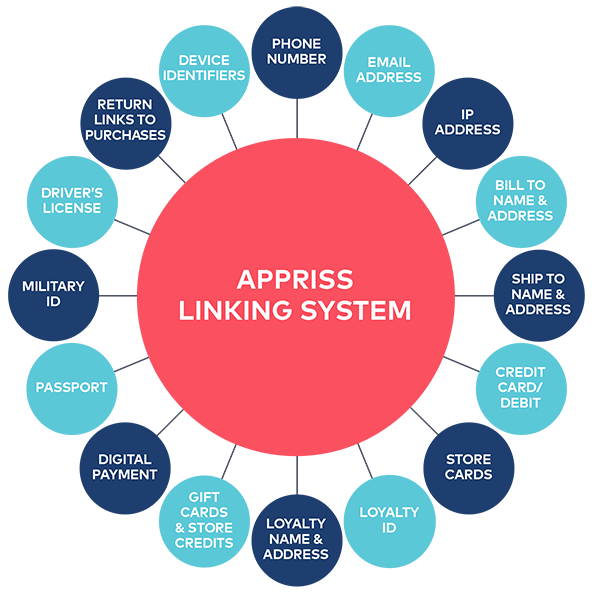Organized retail crime (ORC) is often more sophisticated than it looks. Yes, there are smash-and-grab cases with crime groups brazenly breaking into stores to steal merchandise. But there are also other scenarios to combat, like:
- Ecommerce fraud and abuse — Fraudsters making illegitimate claims on items not received, for example.
- Cargo fraud — ORC groups stealing merchandise from loading docks, trucks, or front porches.
- Gift card fraud — One example of this trend is when criminals use compromised credit cards from the “dark web” to purchase gift cards and then sell them on online auction sites.
All forms of ORC are harmful to retailers, causing hefty financial losses. These crimes not only can impact inventory levels and sales but tarnish a retailer’s brand, too. They can also have far-reaching repercussions for local communities, sometimes forcing store closures. Retailers need to put forth a modern, strategic approach to fight organized retail crime, as crime groups have ways of working around legacy solutions.
5 ways ORC groups exploit traditional security strategies
Organized retail crime presents a growing challenge, stretching loss prevention departments thin as each team member juggles being responsible for more stores while keeping a watching eye on emerging forms of fraud and abuse through hybrid shopping. In fact, the 2023 Retail Security Survey found:
- 81% of retailer respondents said organized retail crime has grown more violent.
- Two-thirds of all shrink in 2022 (a total of $112.1 billion in losses) could be attributed to theft.
Using outdated security strategies can leave retailers ripe for abuse. Here are five ways ORC offenders evade legacy systems:
- Targeting desirable diverse products: ORC groups seek out items that garner a quick resale turnaround. They may steal a high-end fashion item one day and diapers the next.
- Using technology of their own: Tech-savvy fraudsters understand technology better than anyone and are leveraging messaging apps and social sites to recruit and commit theft schemes by knowing the gaps in retailers’ systems and policies.
- Targeting multiple locations: Sophisticated organized retail crime groups span across multiple states, locations, and retailers, which helps them evade detection.
- Adapting to legal environments: A good fraudster can be well versed in the law, understanding prosecution guidelines by state and felony thresholds.
- Exploiting social engineering: Manipulation is a key tactic among ORC groups, so they will look to trick shoppers into sharing personal information, attempt to recruit employees, and use other social engineering tactics to circumvent a retailer’s system.
For a real-world example, a recent news story highlighted five sisters charged with operating a multi-state mail fraud scheme involving fraudulent retail returns, leading to their indictment and substantial fines.
Fighting organized retail crime requires a modern approach to throw off potential fraudsters; AI and machine learning can help.
Solutions to limit profit loss from organized retail crime
A common strategy employed by ORC fraudsters involves adopting different identities to exploit vulnerabilities in outdated systems. These fraudsters capitalize on the fact that many retailers’ systems are not interconnected, leading to inefficiencies in communication between legacy point-of-sale (POS) systems and card-not-present (CNP) providers, as well as customer service systems. However, advanced analytics and machine learning can spot identity issues, question suspicious returns behavior, and find troubling shopping patterns quickly. To enact an efficient and stronger returns experience and identify concerning shopping behavior, machine learning fuels the Appriss Retail Linking System. The solution automatically pulls together pertinent shopper information that highlights potential returns fraud and abuse. The technology helps identify fraudulent activity by spotting a shopper using multiple email addresses, mailing addresses, and credit card numbers. AI-powered solutions arm retailers and their associates with detailed information to cover any gaps or loopholes fraudsters try and wiggle in.
The technology helps identify fraudulent activity by spotting a shopper using multiple email addresses, mailing addresses, and credit card numbers. AI-powered solutions arm retailers and their associates with detailed information to cover any gaps or loopholes fraudsters try and wiggle in.
Mitigating organized retail crime is not easy
Retailers will battle shrink until the end of time, but employing modern technology such as AI can reduce risks, especially growing ones such as theft and ORC.
Fraudsters utilize a range of tactics to steal from retailers, like stolen identities, price arbitrage, employee collusion, returning stolen merchandise, and more. Old security methods can’t keep up with modern criminals; retailers need to evolve their approaches and leverage state-of-the-art technology to protect profits and the integrity of the retail industry at large.





